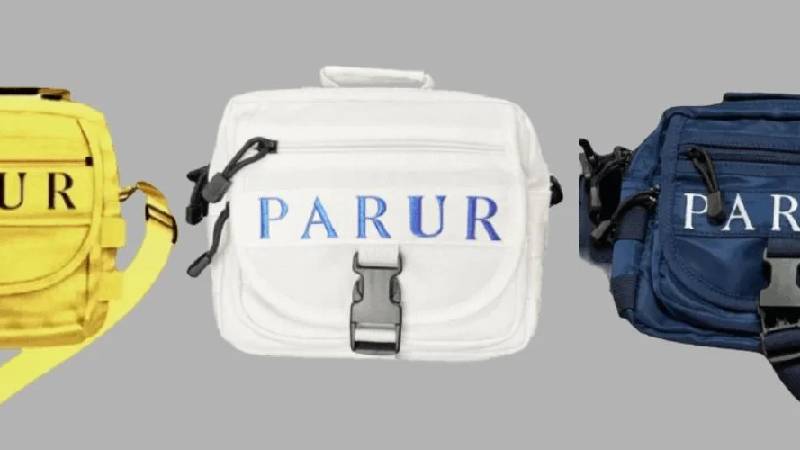Fashion has always been about self-expression and identity, but in recent years, it has also grown to symbolize something even greater—conscious consumerism. Enter Parur, a trailblazing brand that seamlessly blends style with sustainability, proving that fashion can serve both the individual and the planet. This blog explores Parur’s mission, the state of fast fashion, and how the growing interest in eco-friendly brands like Parur is shaping the future of the industry.
What You’ll Learn in This Post:
- The Environmental Impact of Fast Fashion.
- How Parur is setting new industry standards with sustainable practices.
- The growing appeal of eco-friendly fashion in the mainstream.
- Actionable tips to support sustainable fashion.
If you’re a fashion enthusiast or an online shopper curious about building a wardrobe that’s both chic and kind to the Earth, keep reading.
The Impact of Fast Fashion on the Environment
Fast fashion has revolutionized how we shop—offering runway-inspired outfits at shockingly low prices. However, this convenience comes at a significant cost to the environment:
Alarming Statistics to Consider:
- Carbon Footprint: The apparel industry contributes 10% of global carbon emissions annually, making it one of the largest polluters in the world.
- Water Usage: Producing a single cotton t-shirt can consume over 2,700 liters of water—the equivalent of what one person drinks over two years.
- Landfill Waste: Nearly 85% of all textiles go to the dump each year, much of which is non-biodegradable and sits there for decades.
Fast fashion floods stores with cheaply-made garments and drives a consumption cycle that’s difficult to sustain. While the environmental consequences are staggering, the human costs—such as underpaid labor in unsafe factories—are equally urgent issues to address.
Parur’s Sustainable Fashion Practices
Parur emerged as a beacon of hope in an industry plagued by waste and exploitation. This innovative brand has set a new benchmark by adopting three key sustainable practices:
1. Material Sourcing
Parur prioritizes the use of eco-friendly materials like organic cotton, recycled polyester, and plant-based dyes. Unlike conventional raw materials, these options drastically reduce water usage and greenhouse gas emissions.
What makes them unique? Their iconic collection includes pieces made from upcycled fabrics, proving that waste can be turned into something beautiful.
2. Ethical Production
From farm to factory, Parur ensures fair labor standards throughout its supply chain. Workers earn fair pay, work in safe environments, and are treated with dignity—a stark contrast to the labor crises often linked with fast fashion production.
By adhering to certifications such as Fair Trade and GOTS (Global Organic Textile Standard), Parur affirms its ethical responsibility at every level.
3. Waste Reduction
Waste reduction forms the backbone of Parur’s sustainability mission. The company embraces techniques like fabric offcut recycling and limited-edition drops to prevent the overproduction of inventory.
What’s more, Parur offers a take-back program, allowing customers to return old garments to be refurbished or sustainably disposed of.
The Rise of Sustainable Fashion in the Mainstream
Sustainable fashion has moved from the margins to the mainstream, and here’s why:
Consumer Awareness is Rising
Sacoche Parur digital age has empowered consumers with information, encouraging them to question where their clothes come from and what impact their choices have. People are now actively seeking brands aligned with their ethical values, and Parur is meeting this demand head-on.
The Role of Influencers and Celebrities
Fashion-savvy influencers and A-list celebrities have played a pivotal role in popularizing sustainable brands like Parur. Whether it’s a casual Instagram post highlighting an eco-friendly outfit or public support for sustainable causes, these endorsements carry immense weight in reshaping public opinion about slow fashion.
The Future of Sustainable Fashion
The sustainable fashion movement is far from a fleeting trend—it’s a complete reimagining of how we produce, consume, and wear clothing.
Trends to Watch:
- Innovation in Eco-Materials: Expect further experimentation with futuristic textiles, such as garments made from mushroom leather or seaweed fibers.
- Circular Fashion: Platforms that allow customers to rent or resell clothing will dominate, minimizing waste.
- Tech-Driven Sustainability: Blockchain technology will improve transparency in supply chains, making it easier for consumers to trace the ethical practices behind their purchases.
With brands like Parur leading the way, the future of fashion looks greener than ever.
How to Support and Embrace Sustainable Fashion
You don’t have to overhaul your entire wardrobe in one go to make a difference. Here’s how you can take small but impactful steps:
Smart Shopping Tips
- Invest in Quality: Instead of buying ten trendy items, choose one well-made, long-lasting piece.
- Support Ethical Brands: Prioritize companies like Parur with a proven commitment to sustainability.
Recycling and Upcycling Advice
- Donate clothes instead of throwing them away.
- Experiment with DIY upcycling projects, like converting old t-shirts into reusable shopping bags.
Redefine Fashion with Parur
Parur has set out to redefine what fashion can and should be—a harmonious blend of creativity, ethical responsibility, and environmental stewardship. Their continued innovation is inspiring change across the industry, proving that style and sustainability are not mutually exclusive.
Your next shopping choice has the power to impact not just your wardrobe, but also the world. Consider supporting Parur, a brand that’s championing the change we all want to see in the fashion industry.
Remember, every small action, whether it’s choosing eco-friendly garments or participating in garment recycling programs, adds up to create a monumental impact. Together, we can drive the ongoing evolution of fashion into a greener and more ethical future.
